Marvel’s Black Panther movie is now in theaters! Many of you are in love with how gorgeous the designs and costumes are, right? Well, let me tell you about Hannah Beachler and Ruth E. Carter in today’s Black Panther interview. A Look At Black Panther’s Design + Production with Hannah Beachler + Ruth E. Carter
A Look At Black Panther’s Design + Production with Hannah Beachler + Ruth E. Carter
Hannah Beachler and Ruth E Carter. They walked into our interview room, already talking like old girlfriends. The vibe they gave off was like two college girlfriends meeting up for a reunion. They were talk and smiles as they sat down to talk with us. It was amazing to find out they only had met during Ruth’s interview with Ryan Coolger (Director).
Hannah mentioned how she met Ruth E Carter. Coogler told Hannah that Ruth was in the office for an interview, and invited her to join. She walks in, they started talking and the rest is history. She mentioned she didn’t even talk about the interview.
Ruth stated after she left, she had a good feeling about how their conversation went, even if it was about Ryan’s suit (he was getting married). “You know when you’re in the right place and the right space. That’s what I felt like when I left. And I knew that Marvel takes a while to make their decisions. So, I made sure I said to Ryan, you know, let me know, you know. Somebody else could be knocking on the door behind you. But they did. They made the decision, and there I came.”
Hannah echoed the same feeling, “Yep, yep, it was pretty awesome. So, that was an honor for me, because I know your work. And so that was — that just made everything. You know what I mean? It was like, okay, we’re all in good hands.”
Who is Hannah Beachler?
Hannah Beachler is the Production Designer on Marvel’s Black Panther. Beachler worked with Coogler before on “Creed,” the spinoff from the “Rocky” film series, starring Sylvester Stallone and Michael B. Jordan; and “Fruitvale Station,” 2013’s Sundance Film Festival breakout and winner of the Prix de L’Avenir in the Un Certain Regard competition at the 2013 Cannes Film Festival, plus 45 other nominations and awards. She also collaborated with director Barry Jenkins on the 2017 Best Picture Oscar-winning film, “Moonlight,” a coming-of-age tale that transcends traditional genre boundaries. Beachler was designed Beyoncé’s stunning visual concept album “Lemonade,” for which she won the 2017 Art Director’s Guild Award for Excellence in Production Design for Awards or Special Events and earned a 2016 Emmy® nomination for Outstanding Production Design for a Variety Nonfiction Event or Award Special.
This is just a snippet of some of her work, but it’s no wonder Coolger tapped her again to bring in onboard for this Black Superhero movie. To compliment this movie, Coogler brings Ruth E. Carter into MCU as the Costume Designer.
Who is Ruth E. Carter?
Carter has garnered two Academy Award® nominations for “Best Costume Design,” for Spike Lee’s “Malcolm X” (1993) and Steven Spielberg’s “Amistad” (1998), as well as an Emmy® nomination in 2016 for the reboot of “Roots.” Carter has worked in the industry for over three decades and has been credited with over 40 films and counting. Carter is known for her research and diligence to the craft, specifically for her outstanding work for period ensemble films like the highly praised Lee Daniels’ “The Butler” and Ava DuVernay’s “Selma.” Carter’s recent work can be seen in “Marshall,” directed by Reginald Hudlin, which – 48 – premiered in October 2017. Last fall, Carter completed work on “Yellowstone,” an upcoming television series starring Kevin Costner and directed by Taylor Sheridan.
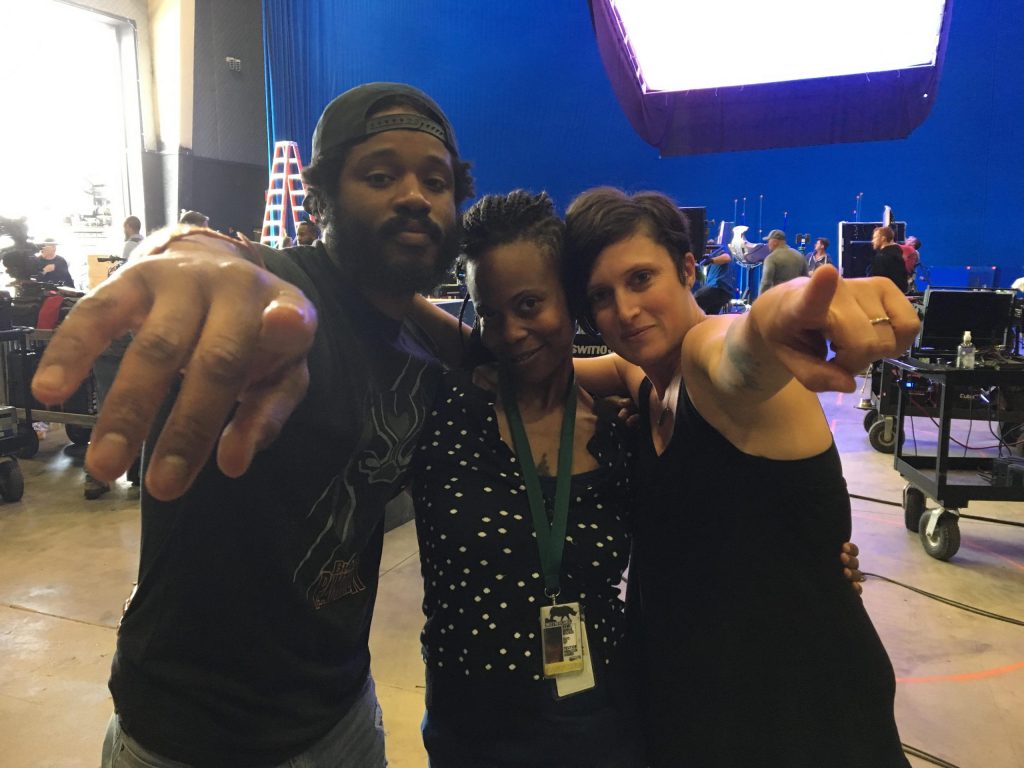
Marvel Studios’ BLACK PANTHER L to R: Director Ryan Coogler, Production Designer Hannah Beachler, and Cinematographer Rachel Morrison on set.
Photo Credit: 1st AD Lisa Satriano
How their process started:
Hannah came on first since the production designer is typically hired after by the director and producers. Ryan sent her a text letting her know that he was going to be tapping her to be the production designer.
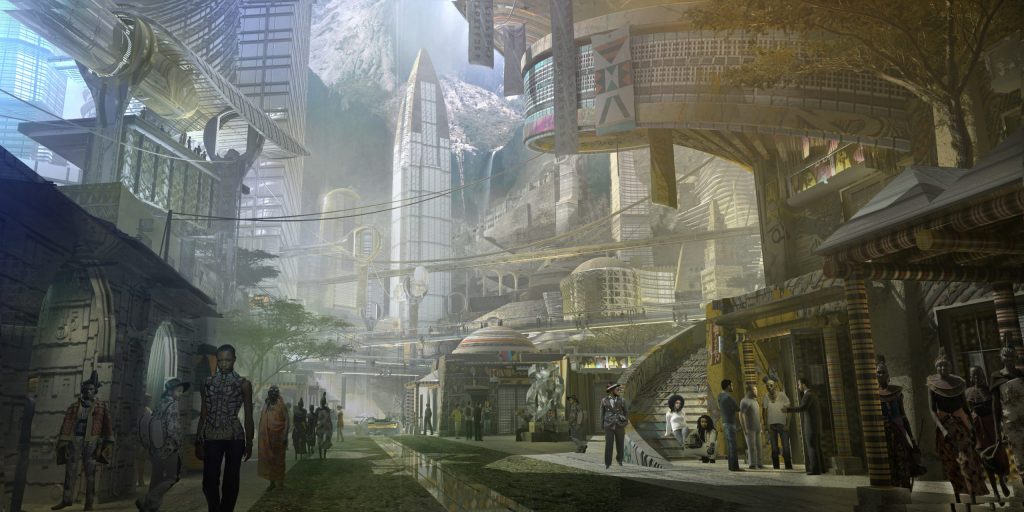
Marvel Studios’ BLACK PANTHER
Steptown Conceptual Set Design by Hannah Beachler’s Production Design Team
Illustration: Till Nowak
Hannah: “And we kind of set it in sort of eastern sub-Saharan Africa. So, basically, you can kind of place it on the border of DRC like right above Burundi and Rwanda. So there was like Kibuye was there, Kenya, Uganda, above Uganda, Sudan. So, that’s sort of where we are. And we also took from Omo Valley tribes in Ethiopia. So you go down a little bit, but we wanted to keep it sub-Saharan. We wanted to keep it very specific. I did reach into Nigeria, Lagos. Did a lot of research in Nairobi and the bigger cities around — and Kenya and in South Africa, Joburg, Cape Town just for some of the architecture. And I looked at lotta older architecture. So, that’s really where my process started really big. Where are we? And then it was like what is the topography of the land? Next step is where does each tribe live on that land and why? And what is each tribe’s history? So then I go down and dot through each tribes’ history, and like this is why they live here. There is a story and a reason behind every single thing you see on that screen coming from me and coming from Ruth.
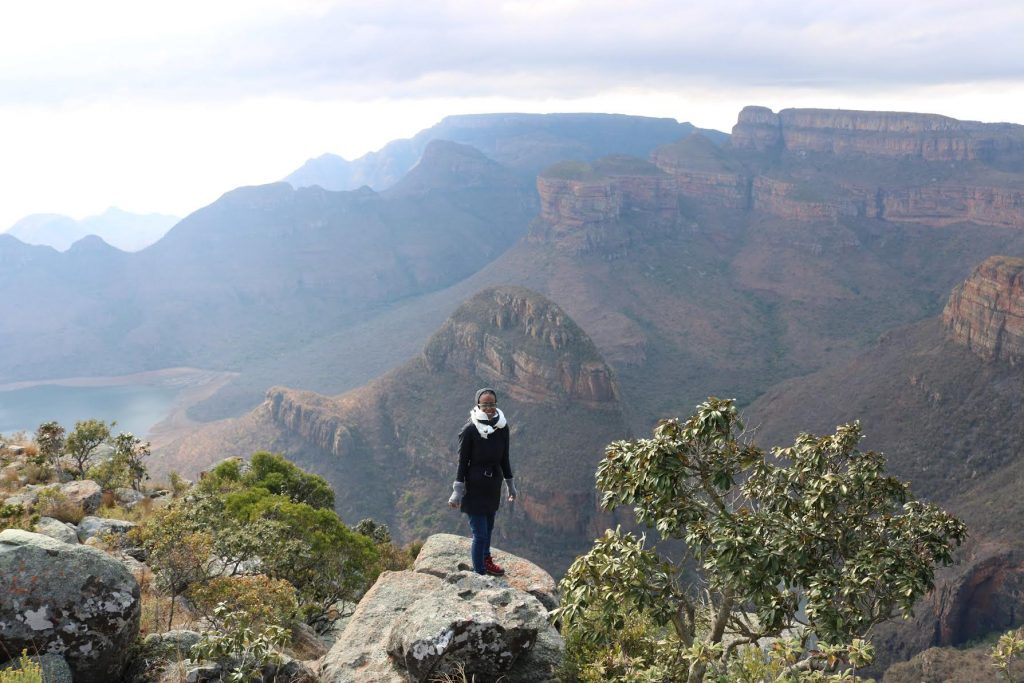
Marvel Studios’ BLACK PANTHER Production Designer Hannah Beachler on the South African research trip in World’s End, Three Rondavels, at Blyde Canyon Photo Credit: Location Mgr. Ilt Jone
Because that’s how the continent felt me to when I was there. When I was in South Africa, it’s like you look around and it’s these giant spaces, you know, even when you’re in the city, but there’s an intimacy, and that comes from the culture and the people. So, that’s really where I started my whole thing and, you know, just kept, you know, working that research and development for that entire time that we were on there.”
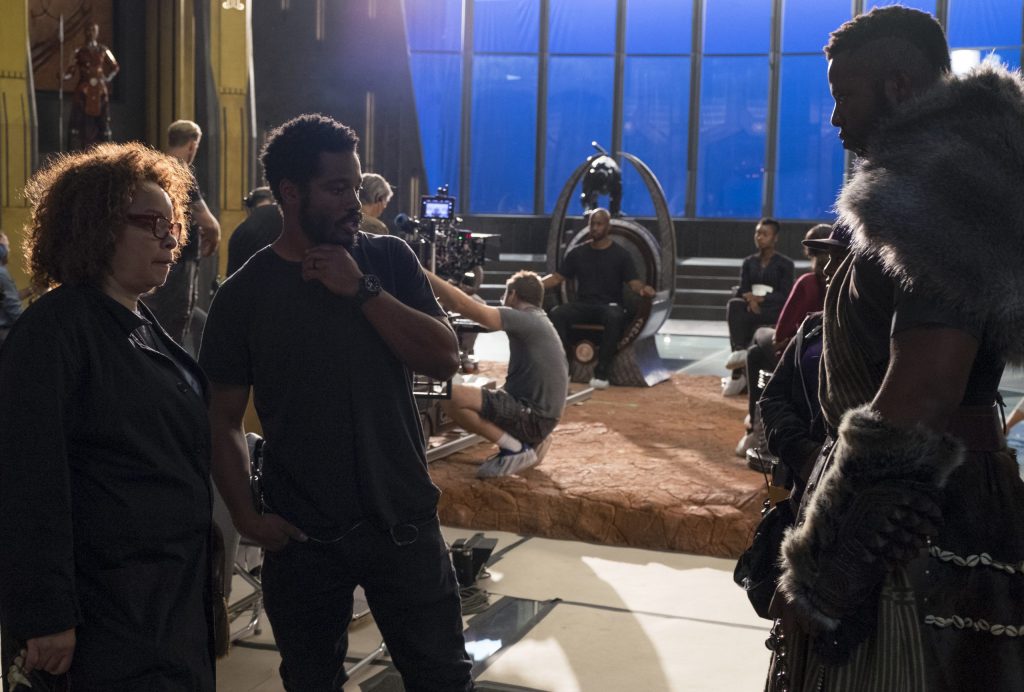
Marvel Studios’ BLACK PANTHER L to R: Costume Designer Ruth Carter and Director Ryan Coogler on set with Winston Duke (M’Baku)
Ph: Matt Kennedy ©Marvel Studios 2018
When Ruth came aboard, she mentioned the train had already left the station. “And so, it was really a matter of me starting out being a really good listener, really getting into what they had done, understanding what they had done. I was in Hannah’s office sitting across from her like let me see everything. And she said, hey, I’ve got this manual. And it outlines everything. And I open it up, and there’s like a map of Wakanda. It has a royal palace in the middle. It has districts that are explained to the hilt. I was like how long did it take you to do this manual (a manual Hannah had created)? Everything is written out. The Insivity language is in there, and you know what it means. So, I bring the manual back to my team, and I’m like, everybody, study this. Study this. Study this.
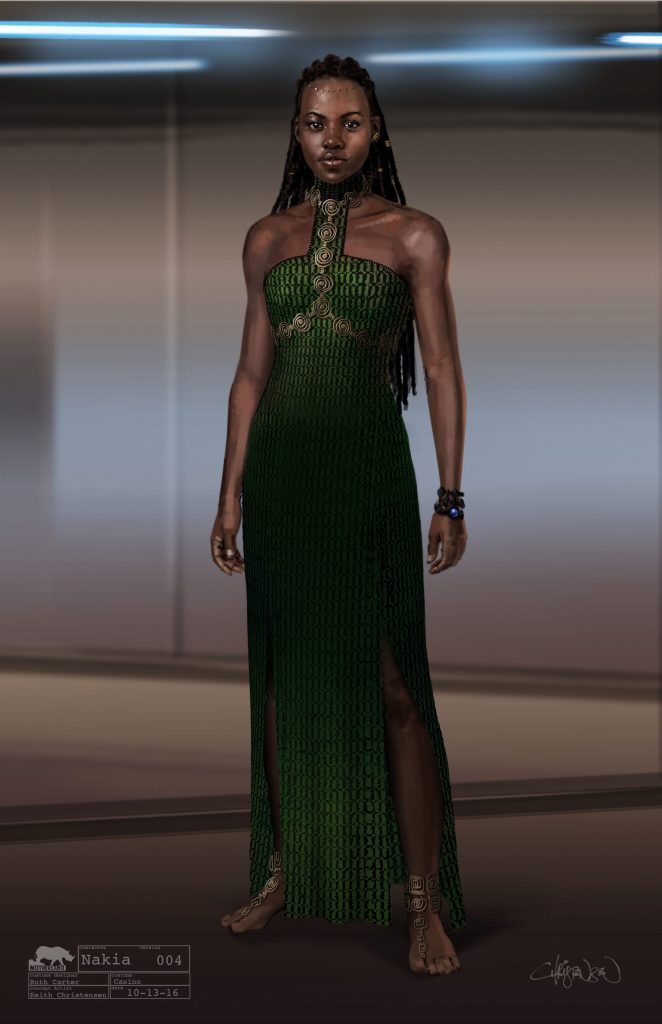
Marvel Studios’ BLACK PANTHER Nakia Conceptual Character and Costume Design Sketch Costume Design: Ruth Carter Concept Artist: Keith Christensen ©Marvel Studios 2018
We were looking at Afropunk. We’re looking at modern fashion. We’re moving everything forward. Everything has to be beautiful. We are not going to lie in any stereotypes at all. Whatsoever. And we wanna present this world as a kingdom. What if Africa was not colonized?”
Wow, what a thought, right? So as everyone is trippin’ over how awesome Wakanda is, how beautifully dressed the people are, you can thank Ruth and Hannah for that one. Wakanda is what Africa would look like had it not been colonized.
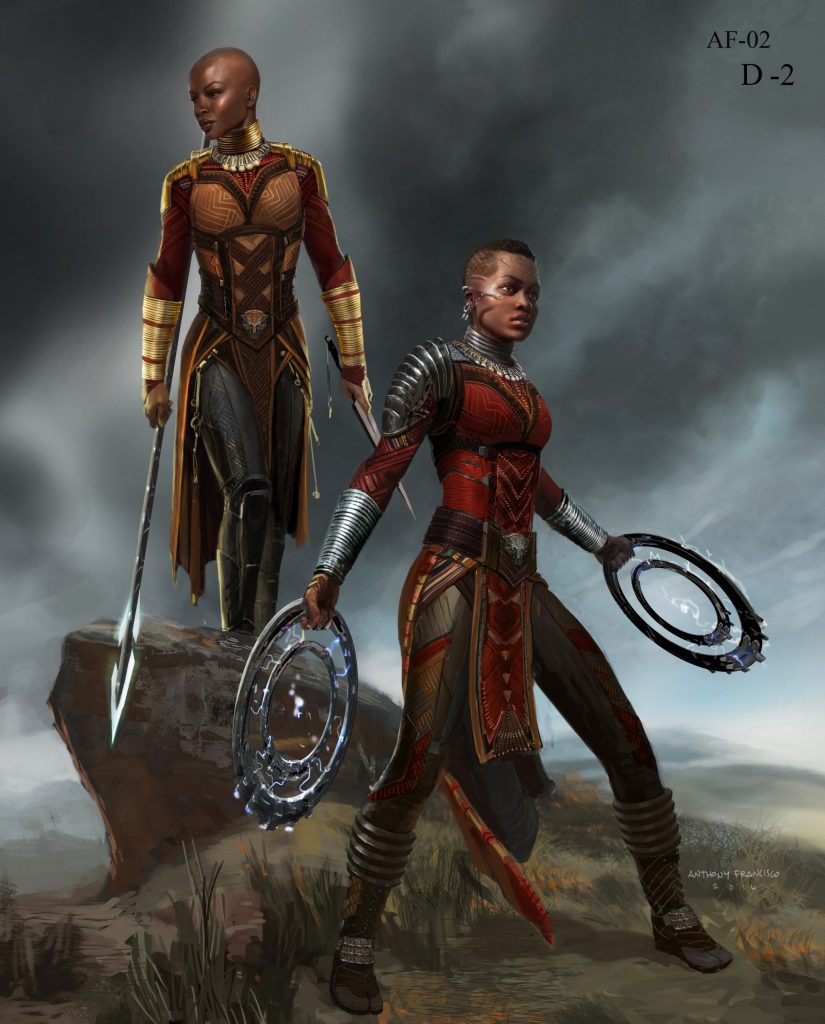
Marvel Studios’ BLACK PANTHER Dora Milaje Conceptual Character and Costume Design Sketch
Costume Design: Ryan Meinderding and VisDev Team Concept Artist: Anthony Francisco ©Marvel Studios 2018
Ruth went on to state “this is like really cool how you can mix ancient indigenous tribal culture with modern. We don’t want to make a documentary. This is a futuristic place. This is a place that has the richest mineral known on earth, Vibranium. And, you know, they’re aware of it. They’re aware of their richness. So, let’s just move that forward. Looking at Afropunk, those images that you see on your phone, going through your Instagram, you see that beauty. And that’s some of the beauty that we wanted to infuse. And when you see the Dora Milaje, you see the Maasai tribe; you see the Himba. And I felt like the color; we upped the ante on the color. If you go to Africa, you see people walking around with color. You see a brown guy with a yellow shirt and red pants. That’s just the norm. So, we’re not reinventing anything. We’re just bringing it out. And we’re just honoring it and holding it up. So, you know, that’s how we started.”
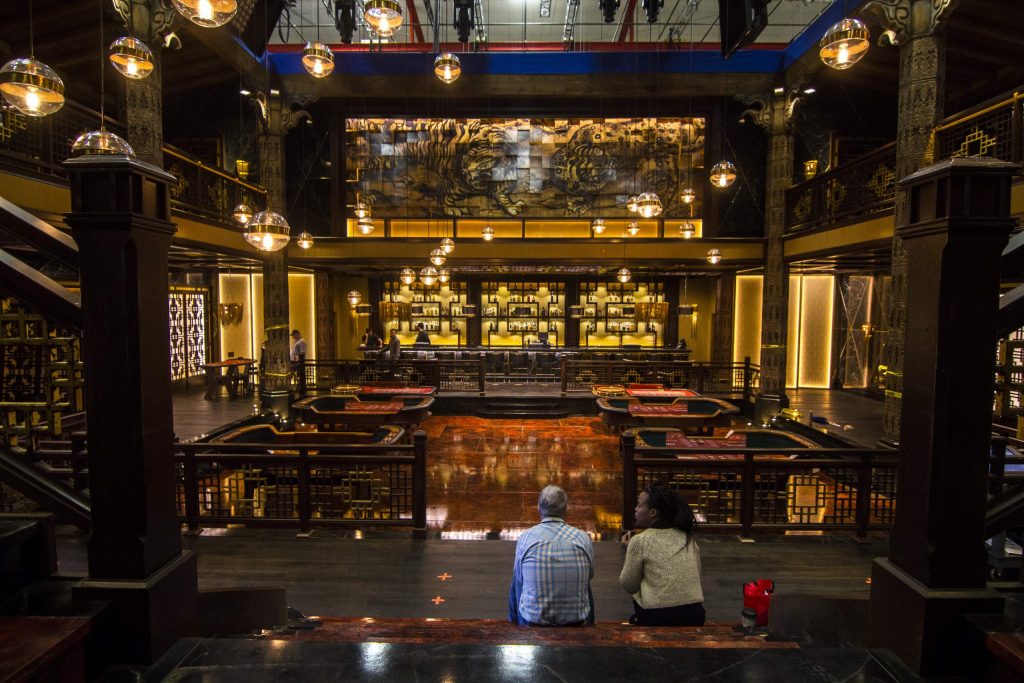
Marvel Studios’ BLACK PANTHER L to R: Set Decorator Jay Hart and Production Designer Hannah Beachler on Korean casino set.
Photo Credit: Art Director Alex McCarroll
The Vision and details of their work
Ruth: “Yeah, and so we did have this vision board. We all had shoppers, and I had one that was in Africa, in South Africa. I had one in Nigeria. I had a shopper in South Korea. And they were — and I said I wanna see the real thing. I don’t wanna see the tourists’ trade. I gotta see the real Dogon mask. I gotta see the real Himba drapes.
Oh, my God. Yes, and so the Lesotho Village they’re one of the last to be colonized, and so they have held on to their traditions. And one of their traditions is this blanket that was given to them from England. So, you know, it is a kind of a part of the beginnings of their colonization. But there’s this beautiful blanket that the King of Lesotho embraced for his village and was like in the 1800s. So, this blanket represents the Queen. They have these different designs that they do, and they’re magnificent. They’re beautiful.
And the Border Tribe they use these blankets, based on Ryan Coogler’s trip to South Africa and to the Lesotho Village where he stayed — and he fell in love with these blankets. So, he was like, Ruth, you have to get these Lesotho blankets. I was like okay. I’m gonna get ‘em. So, my South Africa shopper went to the company that made them, and we got them in in all colors, you know. And then we had to get them all cleared because they all mean different things.”
Ruth went on to talk about the tedious work that went into making sure these blankets would work on-screen. “They hold them dear in their nation. So, we camera tested. We had like — I don’t know — 300 of these blankets that the whole army was gonna use. And Ryan said we need to lace them with Vibranium.We need to make sure that they have Vibranium on them. So, we silk-screened the silver patterns that you see in the movie Okay. So you see they had all those silver elements to them. So that was all the screening process. Then we camera-tested the blankets. And I got a note from Marvel and from Ryan that the blankets were too thick. And we were like a couple of weeks away from shooting. And we had been developing the Vibranium on these blankets for weeks and weeks and weeks. We had imported these blankets from South Africa. It was too late to redo our own design on a blank canvas, but I tried. I called every manufacturer known to man, and they were like we need a six-month lead on the blanket. So, it was nearing Christmas, and everyone was, you know, getting ready to leave and go for their Christmas break. And a few of us decided no break for us. We have to stay and figure out how to make 200 blankets that are beautiful more pliable. They were too stiff. The pile was too heavy. They just kind of, you know, just sat on top and sat as opposed to draping on top. And just one of my assistants said you know what. I’m gonna go get a shaver like they use in the barber. I’m gonna shave these blankets down. So, she took a blanket, and she shaved it. It took her about two hours to shave one side. And we said, no, we can’t take two hours on 200 blankets. So we burned them. Someone else came to the table, and they said if you — if we — I don’t know what the fluid they put on it and they lit a match outside and it burnt the cotton fibers and another part of the fiber that was synthetic stayed. And that’s how they were pliable.
And this is the detailed type of work that went into Black Panther. It’s amazing that they left no stone uncovered. The tedious work, the many hours that went into production and costume designs to get it just right.
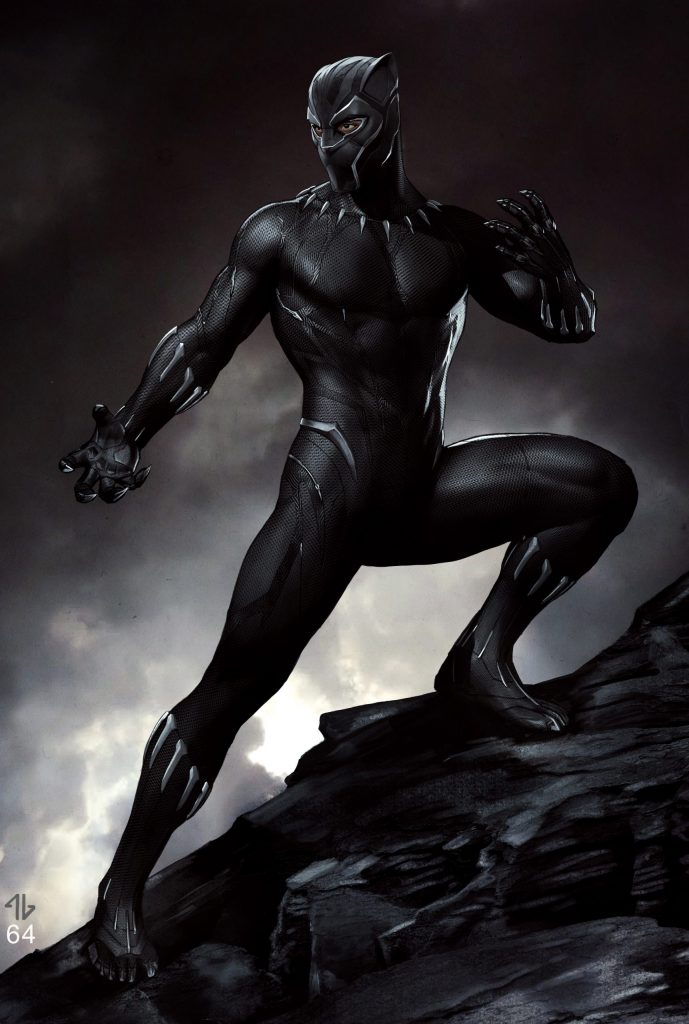
Marvel Studios’ BLACK PANTHER Black Panther Conceptual Character and Costume Design Sketch
Costume Design and Art: Ryan Meinderding and VisDev Team ©Marvel Studios 2018
Styling the Black Panther Cast
Ruth: “Well, when you look at the cast, you know, there is kind of the antagonist and the protagonist. You know, Chadwick is the king, and then Michael B. Jordan is the antagonist. So, the king is royal. The king is the king. We decided that you know, the panther suit, well, the new suit was going to be a newer technology, more streamlined, more beautiful, less for us than the Civil War one was. And so, that translates into his everyday wardrobe. I tried to pick things that I felt that would be body conscious. You see he wears a lotta more knits and sweaters — so that you see his arms.”
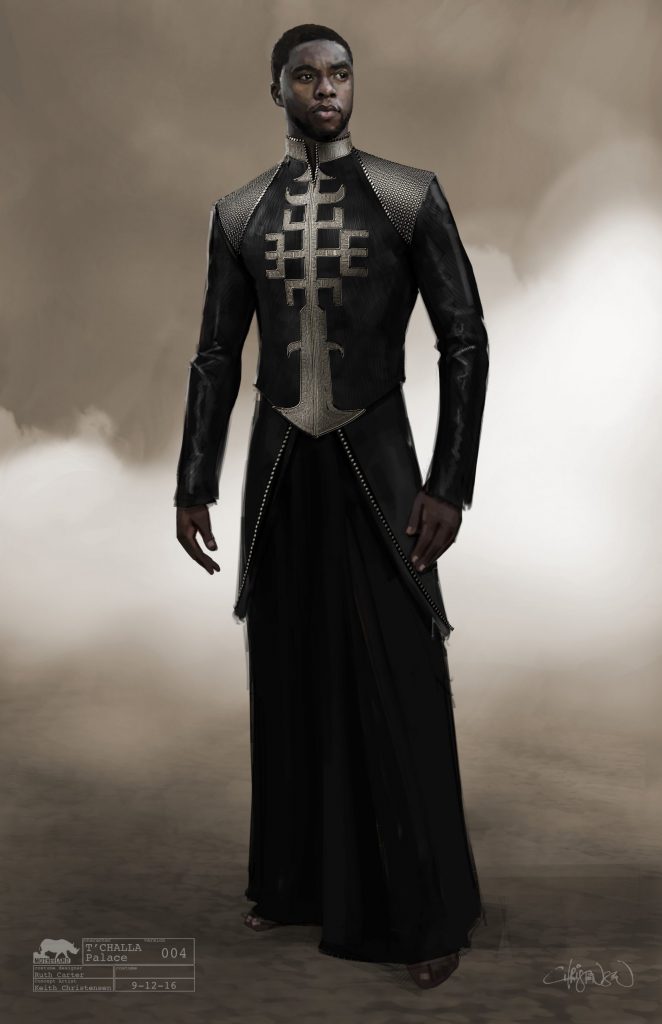
Marvel Studios’ BLACK PANTHER T’Challa Conceptual Character and Costume Design Sketch
Costume Design: Ruth Carter Concept Artist: Keith Christensen ©Marvel Studios 2018
Ruth went on to talk about how fun it was to dress Chadwick. “We did the embroidery on his tailcoat. And that was a fun process. The first time he put on — we tried so many different embroidery styles on there. And I was never really satisfied. And he would put one on, and he was like, yeah, I feel like the Commodores right now. And I’m like okay. Okay, wrong. Wrong idea. Wrong idea. And then so I presented the problem to Ryan who was just so wonderful about, you know, helping you problem solve. Ryan Coogler. He said, here, I saw this beautiful dashiki, and it had a gorgeous embroidery pattern on the front. Use that. And then it — done.”
Favorite Set Design
Ruth’s favorite set was Shuri’s lab (Hannah stated this was also her favorite). I would agree. Hannah and her team did an amazing job of creating a modern, but futuristic feel on Shuri’s lab.
Hannah: “That one was — Letitia would say to me like — so as the sets were coming, you know, and everybody Ohh Ohh. You know, the actors would be like, oh, my gosh, oh, my gosh, oh, my gosh. And we knew Shuri’s was gonna be last. So, Letitia would be like mine better good. And I said — every time I see her I was like it’s gone be. Like, you’re not even gonna believe it. And she was like okay. Like, she wasn’t believing me. And I was like it is. It’s — you have no idea what’s happening over there, you know. And so, we worked really hard on that one. I think it was kinda (Kevin) Feige’s favorite as well. He had told me.”
I remember Letitia talking about this in our interview with her. She LOVED her lab! Hannah said a lot of heart was put into creating Shuri’s lab. Letitia came up to her and she said was so excited, saying, “you did it!”
Hannah: “But it was just a lotta fun, you know because she’s young. She’s a genius. She dressed fabulously. And there’s a lot to her. You know, she’s her brother’s keeper. She wants to protect Wakanda. She is loyal to her mother and her father. So, all of that went in there. And she’s smarter than Tony Stark. She’s the smartest person on earth, man or woman. And so we had to reflect that. But we also wanted to reflect in the big graffiti piece that you see in the centerpiece. We brought in a gentleman, Brandon Sadler, who has done a lot of murals for the Afropunk Festival. He’s out of Atlanta.”
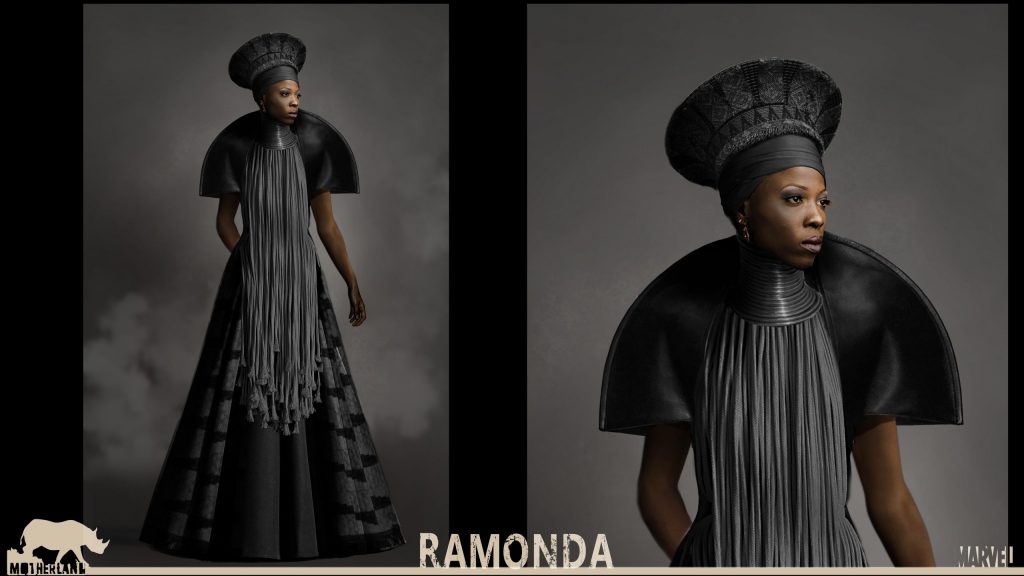
Marvel Studios’ BLACK PANTHER Ramonda Conceptual Character and Costume Design Sketch Costume Design: Ruth Carter Concept Artists: Ryan Meinerding and Team ©Marvel Studios 2018
Favorite Costume Design
Ruth’s favorite costume design was Angela Bassett. “That felt very royal and very queenly. And you knew she was the Queen of Wakanda.”
Hannah commented on something we all felt when we saw this scene. “Everybody was moved when Michael came on, and he didn’t have a shirt on.”
Ruth: “Yeah. I wanna take credit for that, but I can’t.”
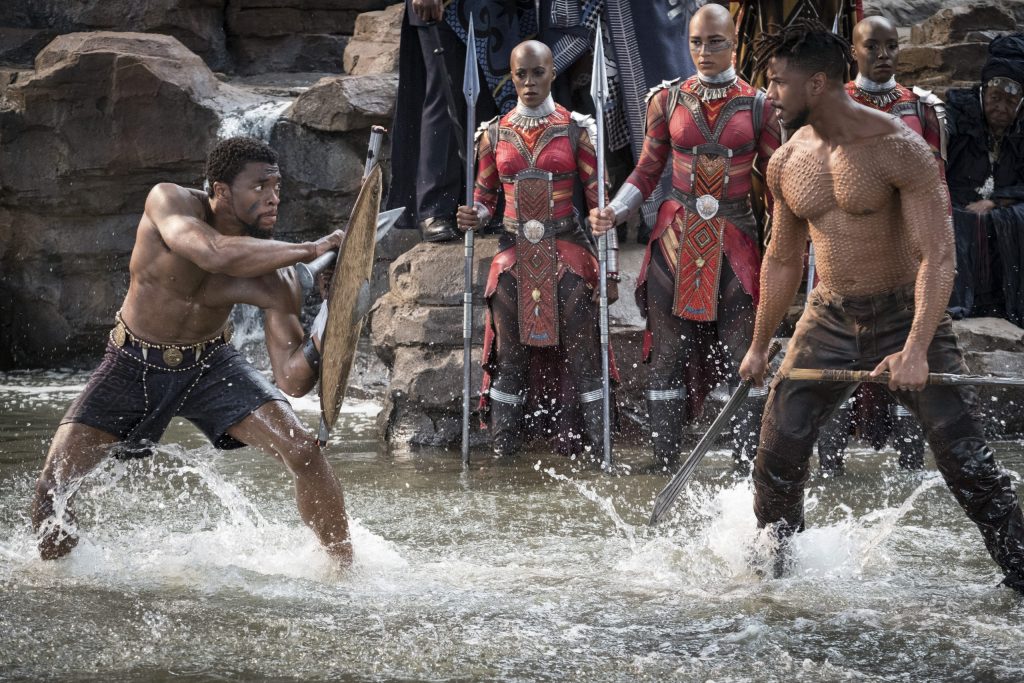
Marvel Studios’ BLACK PANTHER..L to R: T’Challa/Black Panther (Chadwick Boseman) and Erik Killmonger (Michael B. Jordan)..Photo: Matt Kennedy..©Marvel Studios 2018
They were a lot of fun to interview. They vibed off each other, so we didn’t ask a lot of questions- we just listened, laughed and soaked it all up.
Their work in Black Panther was magnificent. You can see it now, Marvel’s Black Panther movie is playing in theaters everywhere!
READ MORE ABOUT THE BLACK SUPERHERO AND MARVEL’S BLACK PANTHER MOVIE:
Black Panther Quotes from Marvel’s Black Panther Movie
Black Panther Cast- what you need to know before seeing Black Panther
10 Takeaways From My Interview with Forest Whitaker on his character Zuri in Black Panther
Why Black Panther Matters: What He Said
Black Panther Themed Cocktail | The Chilling Mist Cocktail
The Black Panther Red Carpet Was The Blackest Reunion Ever!
Why Black Panther Is Going To Be LIT {and I haven’t even seen it}
Music Review of Kendrick Lamar’s Black Panther Soundtrack
8 Points You Need To Know From Marvel’s Black Panther Press Conference
Black Panther Cocktail | The Vibranium Cocktail with Hpnotiq
The Comic Relief in Marvel’s Black Panther: Meet Winston Duke + Andy Serkis
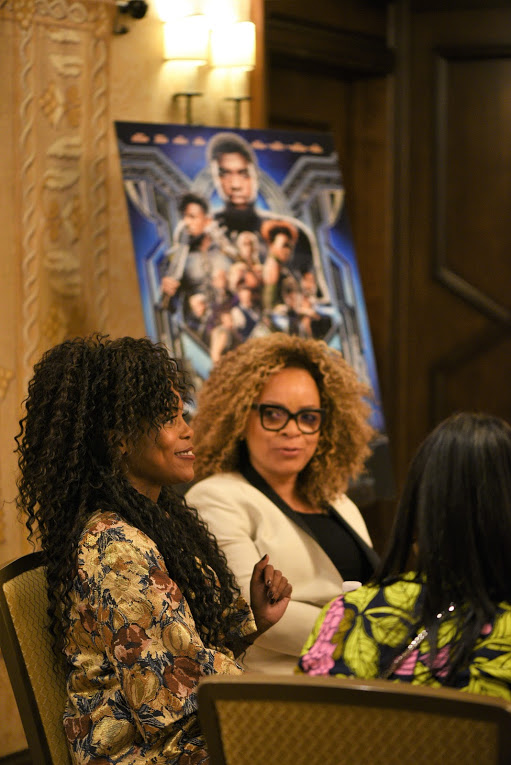
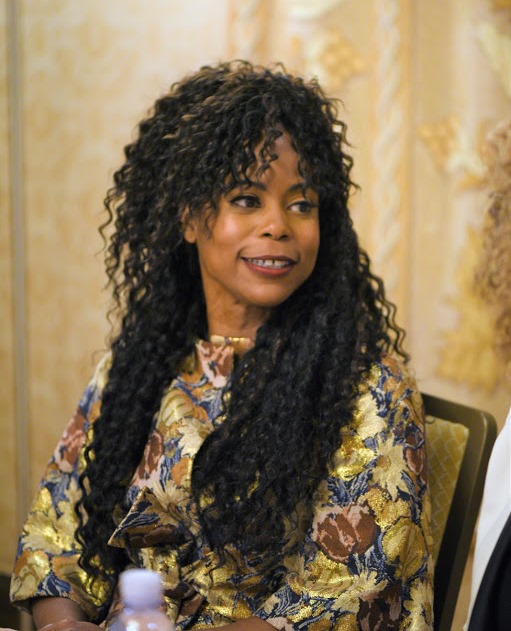
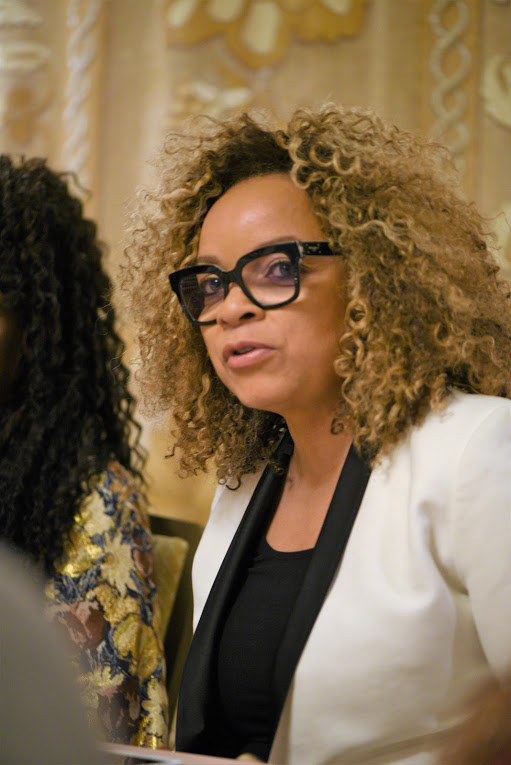
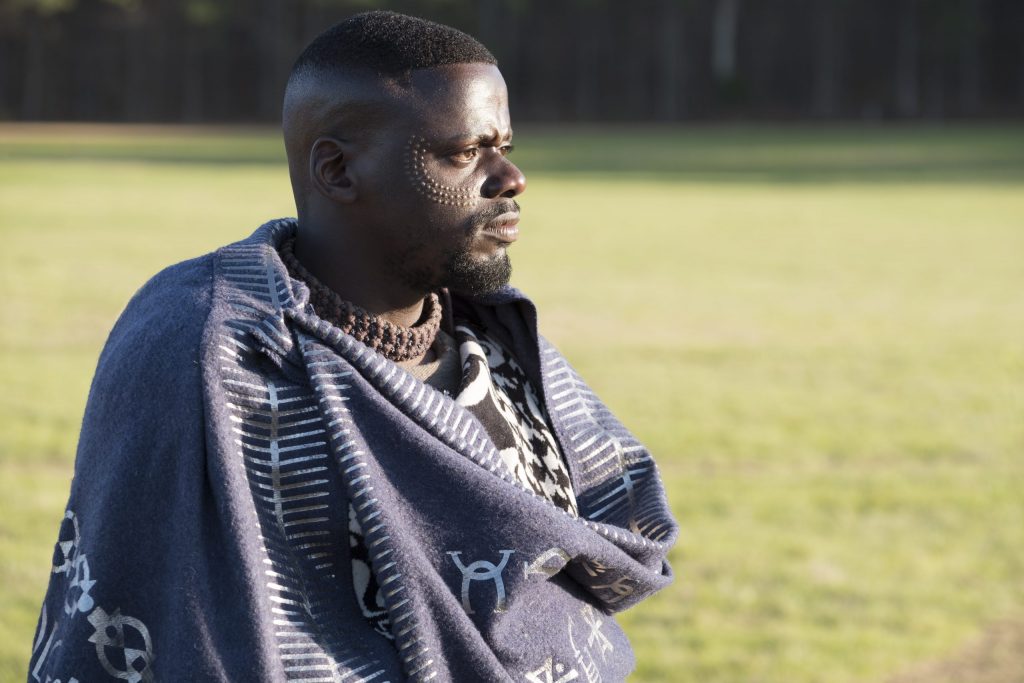
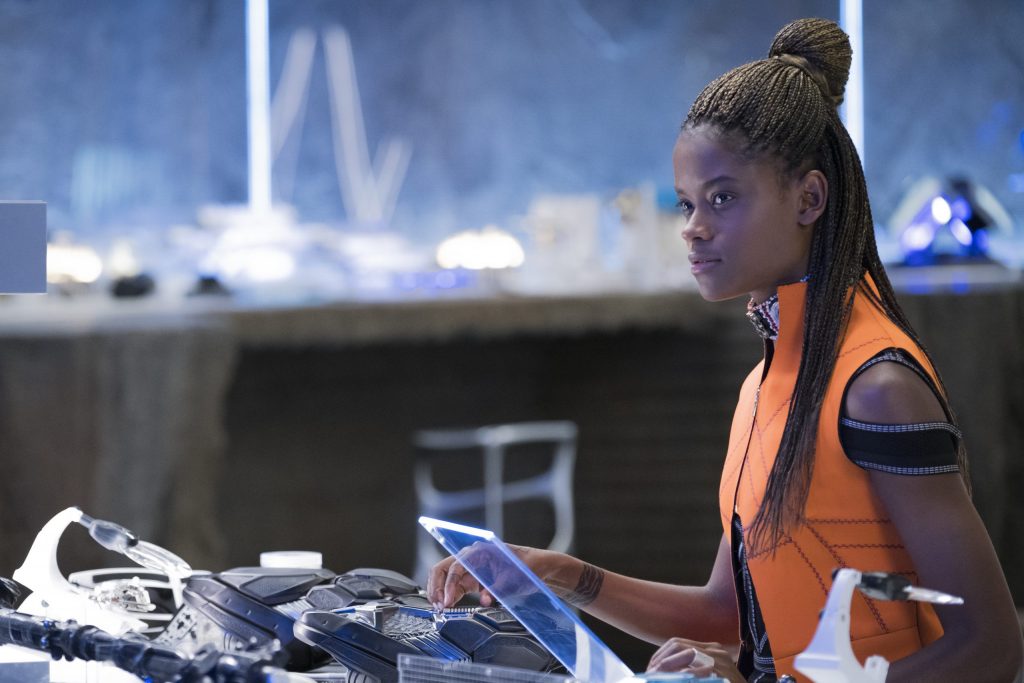
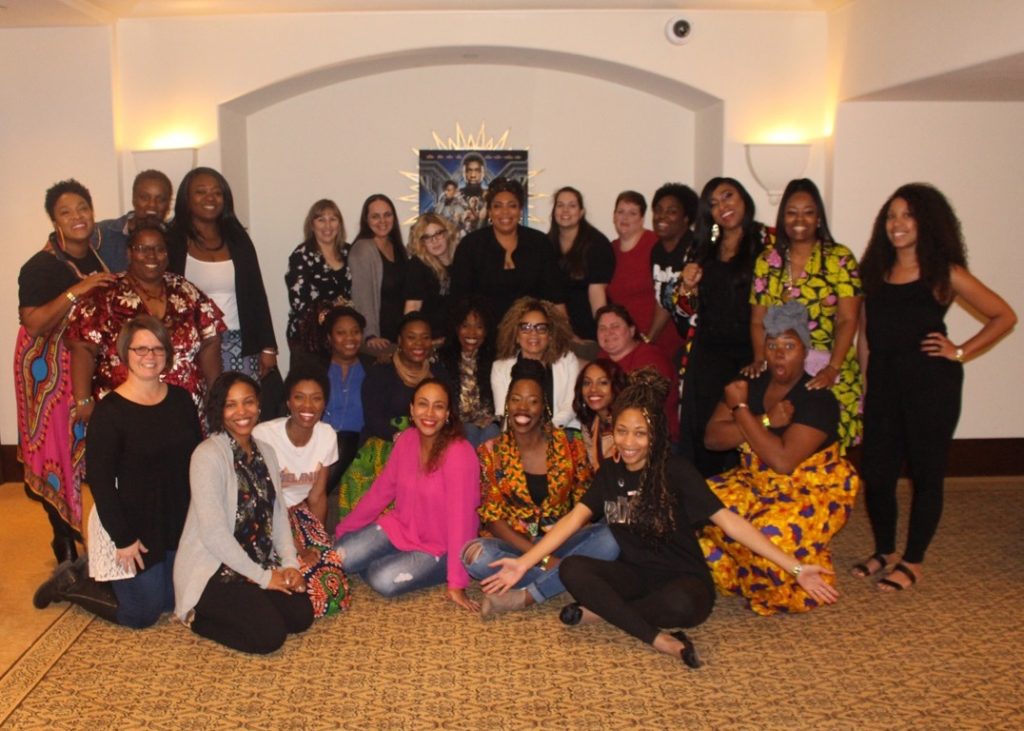
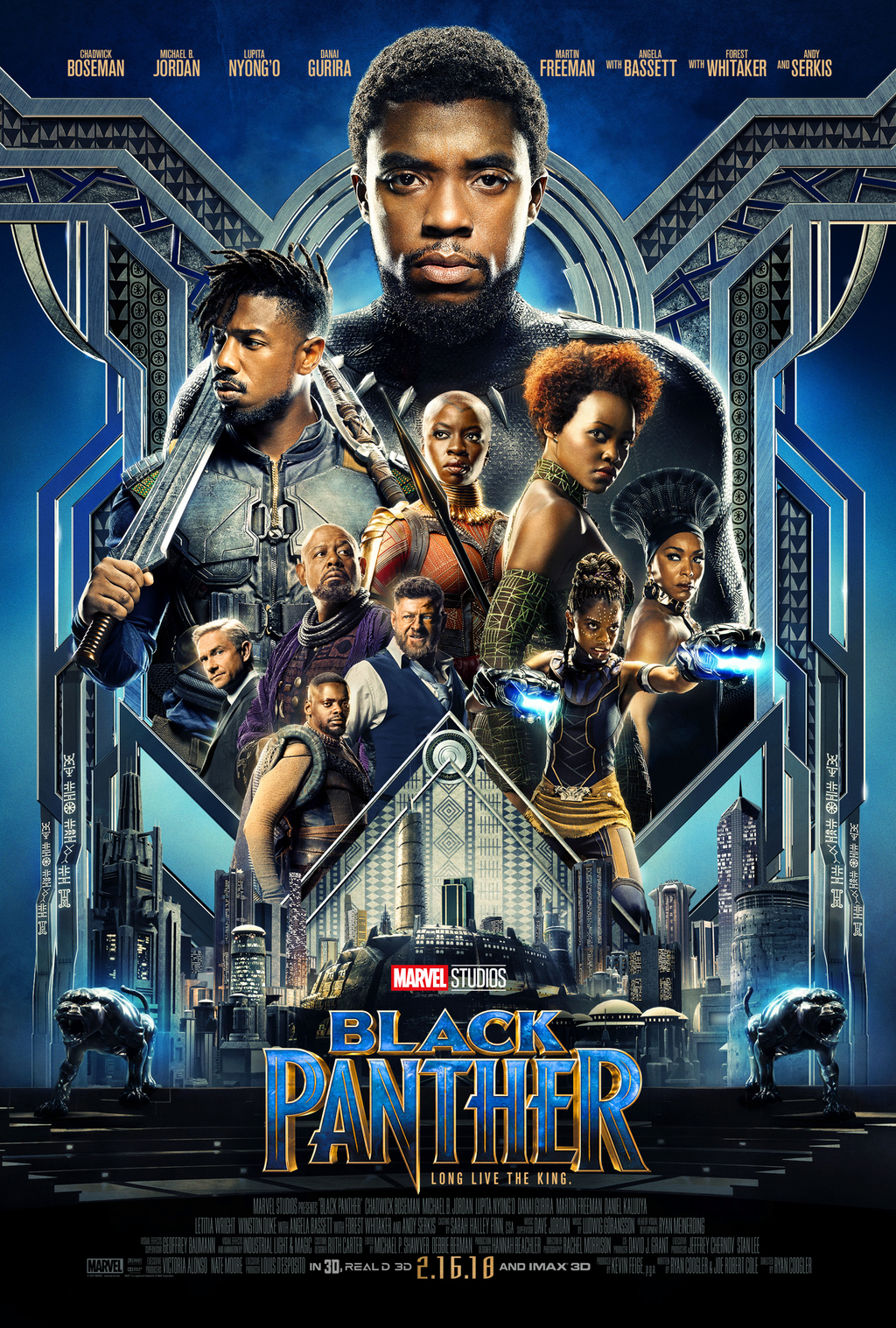
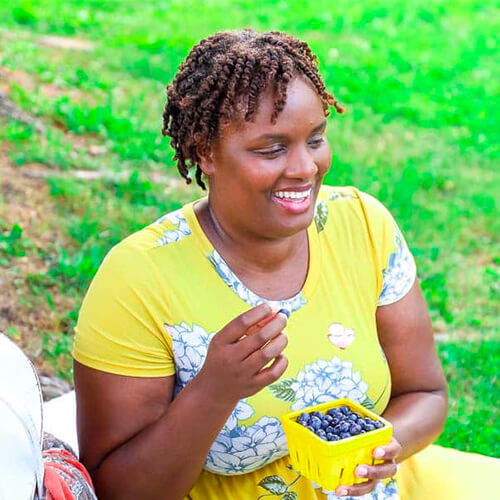
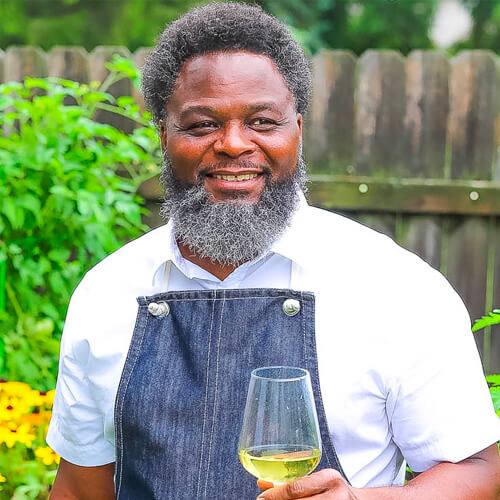
Leave a Reply